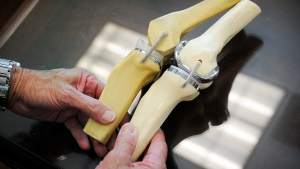Saskatchewan Continues to Struggle with Long Wait Times for Knee and Hip Replacements
According to recent data, Saskatchewan still holds the unfortunate title of having the longest wait times in Canada for knee and hip replacements. This news comes as a disappointment to many residents who have been eagerly awaiting relief from their chronic pain and mobility issues.
The data, released by the Canadian Institute for Health Information, shows that the average wait time for a knee replacement in Saskatchewan is 29 weeks, while the national average is 22 weeks. For hip replacements, the average wait time in Saskatchewan is 26 weeks, compared to the national average of 17 weeks.
These long wait times have been a persistent issue in the province for several years now. In 2019, Saskatchewan also had the longest wait times for knee and hip replacements in the country. This latest data only confirms that the problem has not been adequately addressed.
The impact of these wait times on patients cannot be understated. For many, the pain and discomfort caused by their knee or hip condition can significantly affect their daily lives and ability to work. The longer they have to wait for surgery, the more their quality of life is compromised.
The Saskatchewan Health Authority has acknowledged the issue and has stated that they are working to reduce wait times. They have implemented several initiatives, such as increasing the number of surgeries performed and improving the efficiency of the process. However, it is clear that more needs to be done to address this ongoing problem.
In comparison, other provinces have made significant progress in reducing wait times for knee and hip replacements. For example, Ontario has an average wait time of 14 weeks for knee replacements and 12 weeks for hip replacements. This stark contrast highlights the need for Saskatchewan to take more decisive action in improving their wait times.
In conclusion, the latest data on wait times for knee and hip replacements in Saskatchewan is concerning and disappointing. It is crucial for the provincial government and health authorities to prioritize this issue and take concrete steps to reduce wait times and improve the quality of life for patients in need of these surgeries.



